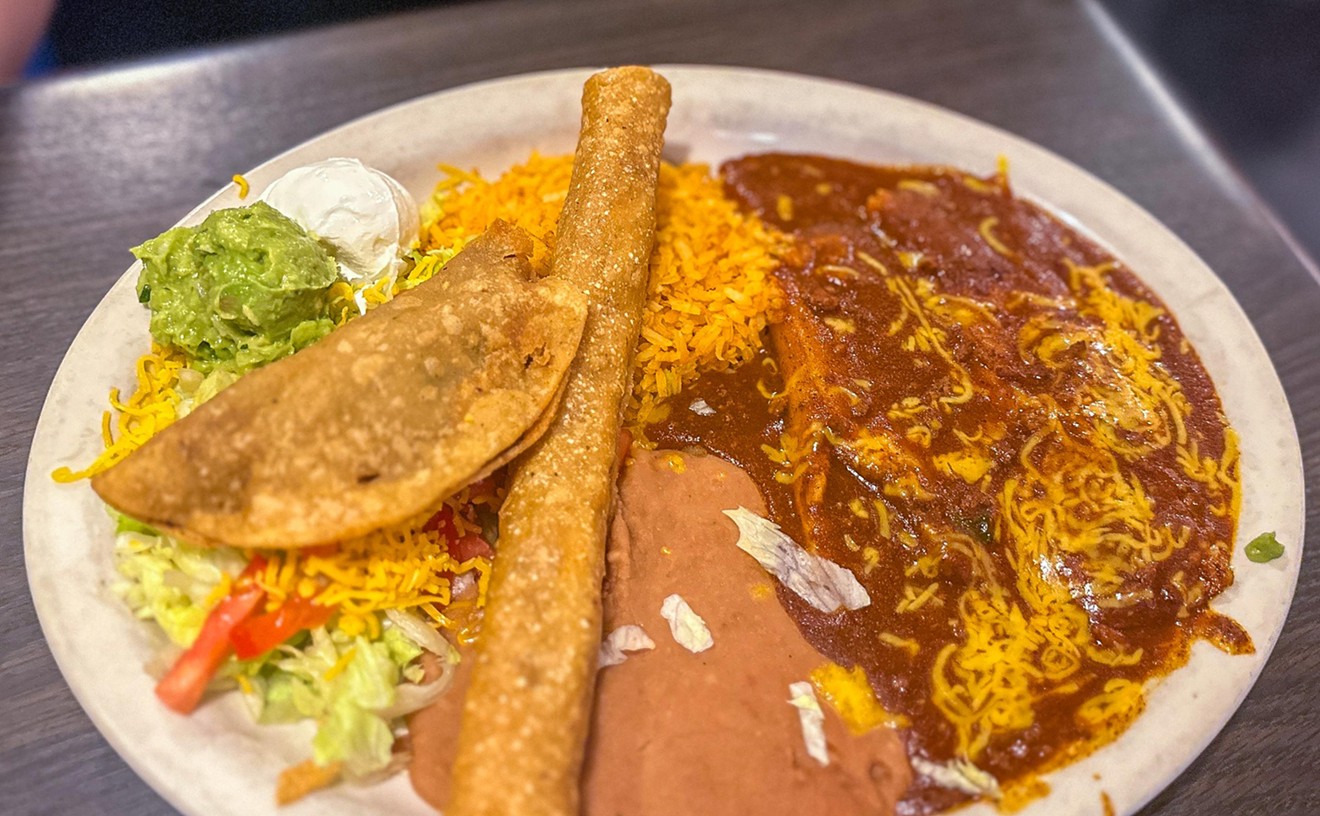I once had a job at a bridal boutique that sidelined in dresses for prom. What I learned from the girls who came to our store in search of sparkles and sequins and as little material as their principals would allow is that preparing for a high school dance is exhausting. Prom-goers have to negotiate curfews, audition hairstyles, book limos, save up for pricey photo packages and make sure they don't do anything in the stressful weeks leading up to the party that might leave them dateless.
I also learned that there's one element of prom night that doesn't vex 17-year olds: Dinner.
The most popular prom dinner spot, hands down, is Olive Garden. Kids heart the restaurant because it feels fancy and familiar at the same time and because it's hard to ruin a $300 dress with a bread stick.
Darden Restaurants Inc., the genius restaurant company behind every teenager's favorite Italian restaurant, has come up with an Olive Garden for grown-ups, and judging from the crowds at Plano's Seasons 52, the brand's first location in Texas, adults are equally susceptible to the chain's charms.
To be clear, Seasons 52 doesn't profess any kinship with its ubiquitous down-market cousin. The 7-year-old concept has only 15 locations nationwide and no qualms about charging $27 for an entrée or $18 for a glass of wine. Its dining rooms are done up in dark wood and stone meant to evoke a California mountain lodge. The restaurant's stated specialties are sophistication and "seasonal cuisine."
But, just like Olive Garden, Seasons 52 appeals to its customers' anxieties. Its target demographic is diners who want an upscale meal but don't want to deal with the unknown—or, heaven forbid, lots of calories.
Seasons 52 is a restaurant for folks who fear food. It may be trendy to love, love, love food right now, but there are plenty of people for whom the prospect of eating is petrifying, because salt raises their blood pressure or garlic makes their tongues bumpy or gluten gives them stomachaches. Seasons 52 has customized menus for all of those diners and for vegans and vegetarians too.
And the dietary restrictions aren't just for eaters under a doctor's care: Every dish on Season 52's menu clocks in at less than 475 calories. While such discipline is certainly admirable in an industry that smushes hamburger patties between glazed doughnuts, the coerced self-denial is more depressing than liberating. Perhaps if the vegetables were more thoroughly thawed or the cheese not so forthrightly low-fat, the restaurant could achieve the ritzy spa feel it's presumably chasing. Instead, the relentlessly bland food recalls a far more controlled edible environment, where meals are served on over-bed trays with foil-lidded cups of water.
The calorie limit isn't a death sentence for every Seasons 52 dish. Starter salads, while artless, are satisfyingly green and free from overdressing. The dinner menu includes five fairly successful skateboard-shaped flatbreads, which can't be called pizzas because the crust's so papery it can barely shoulder the toppings' weight. I don't know how many calories are extracted with each pass of the rolling pin, but Seasons 52 has gotten its flatbread so thin that it can serve a steak-and-blue-cheese version without running afoul of its calorie rules.
There isn't really sufficient crust to taste: I have no clue whether it skews sweet or sour, but the toppings are pretty decent: I especially liked a pizza with tangy hunks of artichoke and soft bits of goat cheese. Of all the dishes I sampled at Seasons 52, it was the only dish that went back to the kitchen clean.
The artichoke flatbread was listed among specials that our server stressed change every week—that's why the restaurant's called Seasons 52, he explained. The entire menu is overhauled every three months, in accordance with the seasons. It's impossible to get out of Seasons 52—or skim its website, or read one of its press releases—without being bombarded by seasonal talk. The restaurant's obsession with seasonality is so complete it makes the Old Farmer's Almanac seem timeless.
That wouldn't bother me a bit if there were any evidence the seasonal thing was anything but a marketing ploy. First off, I'm not sure what makes a weekly specials list so impressive. Back when I worked at a Greek diner (before my later promotion to wedding dress sales), our specials changed every day. Sure, our specials were inspired by the Sysco truck's schedule, not a garden, but the plat du jour's hardly a radical restaurant concept.
More critically, though, Seasons 52's so-called seasonal specials don't seem to have any relation to the season. When I Googled the artichoke flatbread to find its calorie count (it's a squeaker at 429), I discovered the restaurant served the same seasonal special in December and April. Unless Seasons 52 is letting the NBA define its seasons, it's a stretch to stick those two months under one seasonal umbrella.
Seasons 52 is consistently blasé about seasonal correctness. I was served plates in November that included strawberries and asparagus, a fruit and vegetable that aren't considered autumnal anywhere in the Northern Hemisphere.
What makes the hypocrisy hard to ignore is the overall quality of the food, which is disappointingly low. Seasons 52 would do well to follow the culinary philosophies charted by chefs who really do work in the seasonal idiom and play up core ingredients. Instead, the kitchen has a tendency to smother its flavorless dishes in low-quality cheese.
Our server spoke glowingly of the goat cheese ravioli, which turned out to be an unappetizing heap of cottage cheese and goat cheese girdled in a transparently thin sheet of pasta. More goat cheese was piled atop a deflated and insipid chile relleno, accompanied by a ticklish pico de gallo. For an appetizer of stuffed mushrooms tucked into the divots of an escargot platter, Seasons 52 uses scads of Parmesan to conceal the taste of crab and shrimp, both greasy and devoid of the advertised garlic.
Shrimp didn't fare much better as an entrée: A dried-out stuffed shrimp dish was a chore to eat, while lifeless shrimp pasta was graced with a vegetable medley that smacked of a healthy frozen dinner. A filet mignon was grilled nicely, but a rack of lamb was spoiled by a heavy dousing of what tasted like Italian dressing.
Seasons 52 is often lauded for its desserts, which are tiny, and its wine list, which is long. There's a good selection of wines served by the glass, including a few that are downright geeky by chain standards, such as a Selbach Riesling and King Pinot Gris. Wine service, though, is a mess: The wine's poured at the table, but our server didn't bother to show the bottles' labels nor serve the women first. And when our bill arrived, we were all charged for Cakebread Chardonnay, which I'm sure is what many Seasons 52 patrons do drink.
I'm not a chain hater. I'm willing to admit I like the cheese biscuits at Darden's Red Lobster and have been to Olive Garden frequently enough to know I can get the shrimp primavera made with whole wheat pasta. But what's great about chains—or, not so great, if you own a restaurant that's trying to compete—is the food's robustly flavored (albeit mostly with salt and butter) and ridiculously cheap. That's certainly not the case at Seasons 52, which strikes me as a far more cynical enterprise than its sister brands. I think I'll stick with the kids at Olive Garden.










